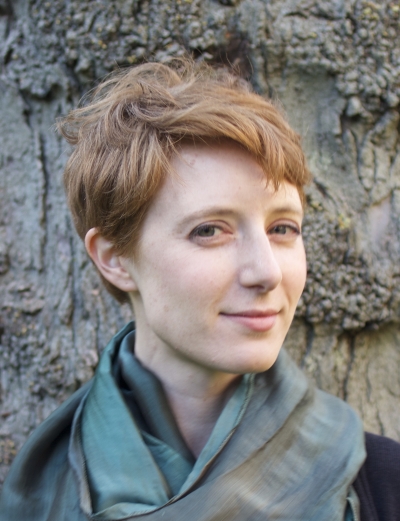
Zelda Roland
In this series, we speak with professors who lead different sections of the Core Curriculum to learn what they love about engaging with College students. This month we chat about Art Hum with Meredith Gamer, assistant professor of art history and archaeology. Gamer specializes in the visual and material culture of 18th- and 19th-century Europe, with a focus on Britain and the British Empire; she has been teaching in the Core Curriculum for eight years.
What is the best part about teaching the Core Curriculum?
I think of it as a great gift that I teach at a university where everybody in the College is required to take a class like Art Hum, because there are a lot of people who don’t study art history in high school and who might come here assuming that it’s not for them, or not really knowing what it is. So one of the things I love about teaching Art Hum is that I not only get students who are already interested in the topic, but also students who assume or expect that they might not like the course at all; being able to convince those students that this is something that is for them — that is interesting to them in ways that they might not have anticipated — is a huge pleasure.
The other thing I love about Art Hum is that it teaches a kind of visual literacy, by which I mean that it teaches students to “read,” or analyze, works of art in a way that’s critical and slow and careful. There’s often a point in the semester where it suddenly clicks for them — when they realize that what we’re doing with a painting or sculpture or building is similar (not exactly the same, but similar) to what they’ve learned to do in their Lit Hum or CC classes with a work of literature or philosophy. It’s always exciting to me when students begin to understand that images and material objects have a language of their own.
How do you put your own spin on teaching Art Hum?
Although most of the Art Hum curriculum is shared across all sections, the syllabus leaves room for instructors to choose one artist or theme of their choice. I often choose to teach Kara Walker as the last artist whom we discuss. Walker is a contemporary American artist whose work is deeply engaged with the history and afterlives of slavery in America, and she does this, in part, by making very smart and knowing use of the Western art historical canon — so, in other words, the very thing we’ve been studying all semester.
It’s a really nice moment, to see students apply their skills to something that is new, that isn’t part of the official Art Hum curriculum. That is the kind of thing I want them to be able to do in general: to go into a museum or a gallery space, and to begin making sense of what they’re looking at. Above all, what I want them to learn is that their own eyes are the key tool here — not what they know, not what they’ve been taught, but actually looking. There is information, there is meaning that can be gleaned and distilled through the act of looking alone.
What are you teaching that feels especially relevant right now?
Francisco Goya’s Disasters Of War. The Disasters is a series of 82 prints that represent scenes from the Peninsular War (1807-1814), when Napoleon’s forces invaded Spain and Portugal. The series is often described as one of the first modern depictions of war, and what is generally meant by this is that the prints are not propagandistic — they’re not celebrating the victory of one side or another. Instead, they are about the tremendous suffering that war causes, about the trauma it engenders. When I was teaching Art Hum this past fall, we arrived at Goya just a few weeks after the Israel-Hamas war had begun. I knew the Disasters would be difficult for us to discuss in light of these events — but, for me and I think for my students too, it ended up being one of our most important conversations.
What has been your favorite Core Curriculum teaching moment?
I have many, but here is one: Last fall, we were talking about Impressionism, and I was trying to describe the incredible shift that the invention of photography brought about in people’s thinking about the purpose of art, and painting in particular. Because if photographs can reproduce reality — with greater accuracy and precision than an artist ever could — then what’s the point of painting? So we talked about how Impressionism was, in part, a response to this technological development: suddenly, painting had to do something new, something different than what it had done before. One of my students quickly understood that a contemporary parallel could be made with the invention of AI. Suddenly we have this sense that computers can do things that only artists used to be able to do. And this has created a sense of crisis for some in the art world, but it’s also created new possibilities. To illustrate what she meant, the student referenced a recent Nikon ad campaign, which features a series of photographs that were taken with a Nikon camera but that look so strange and surreal that you would assume they were made by AI. And she was totally right. We can’t transport ourselves back to a time when photography didn’t exist — but we can imagine what such a drastic change might have felt like through our own experience with the rise of AI. These are exactly the kinds of creative connections that I want my students to be able to make.